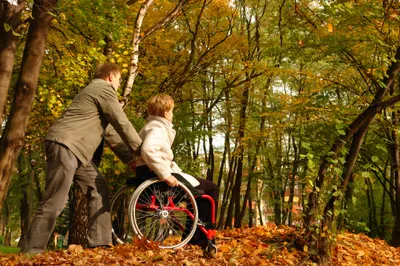Family bonds can be very strong, so strong that several genetic disorders, or conditions, are common in children through their parents or grandparents where diseases can directly be traced back through ancestry or ethnicity. For example, sickle cell anemia is one common genetic disorder that mainly affects individuals of African or Mediterranean descent.
So whether you fear a genetic condition due to your ethnicity—or if a certain genetic disease is common throughout your ancestry; here are the ten most common DNA mutation disorders…
1. Cystic Fibrosis
Cystic Fibrosis is one of the most widespread inherited genetic disorders. It prominently affects Caucasians who are Ashkenazi Jews. It occurs only when both parents are carriers, which gives their children a 1 in 4 risk of contracting the disease. Cystic Fibrosis results when a lack of a certain protein is present and the balance of chloride in the body isn’t restricted. Symptoms include difficulty breathing, recurrent lung infections, digestive, and reproductive issues.
2. Huntington’s Disease
Huntington’s Disease (HD) causes the degeneration of the nerve cells in the brain and central nervous system. This hereditary condition is autosomal dominant disorder, meaning that children have a 50-percent chance of developing it and passing it along to their own children if one of their own parents has it. Treatment aims to limit the course of the disease. HD typically shows itself when the individual is between 30 and 40-years old—however, rare forms begin in childhood. Symptoms of HD include uncontrolled movement (chorea), difficulty swallowing, behavioral changes, difficulty balancing and walking, memory, speech, and cognitive loss.
3. Down Syndrome
Down Syndrome, a common chromosomal abnormality that effects approximately 1 in 1000 newborns (particularly in older expectant mothers), results when an extra copy of genes occurs on chromosome 21. Although Downs can be detected by pre-natal testing, babies affected typically show the following features at birth—decreased muscle tone in the face, developmental delays, and heart and digestive system defects.
4. Duchenne Muscular Dystrophy
Symptoms of Duchenne Muscular Dystrophy typically show themselves before the age of 6. The condition causes fatigue and weakness of the muscles, which starts in the legs and then gradually progresses to the upper body, leaving individuals wheelchair bound by the age of 12-years-old. For some reason the condition affects mostly boys with symptoms such as heart and respiratory difficulties, deformity of the chest and back, and potential mental retardation.
5. Sickle Cell Anemia
Sickle cell anemia (SCA) occurs when red blood cells are unable to carry adequate oxygen throughout the body due to their deformation—healthy red blood cells are disc-shaped, but those with SCA have crescent-shaped red blood cells). SCA can only occur a few times in one lifetime and is often present in those of African, Mediterranean, Caribbean, South and Central American, and Middle Eastern descent. This genetic disease is extremely painful, causing abdominal, chest, and bone pain, fatigue, shortness of breath, accelerated heart rate, delayed puberty, stunted growth, fever, and leg ulcers. Pain medication, rounds of folic acid, kidney dialysis, and blood transfusions can help ease some symptoms.
6. Celiac Disease
This digestive, genetic disorder inflicts patients with gluten intolerance—basically those afflicted with Celiac Disease are unable to digest any products or food containing gluten (i.e., foods processed from wheat and related grain). If left undiagnosed, the disease will often lead to malnutrition and dehydration due to severe diarrhea. Additional signs of the condition include abdominal bloating and digestive pain.
7. Becker Muscular Dystrophy
Becker Muscular Dystrophy is similar symptom-wise to Duchenne Muscular Dystrophy in that it shows itself in similar fatigue, potential mental retardation, and weakening muscles (particularly legs). However, while the muscle weakness of the upper body is more severe in the Becker version, the weakening of the lower body is gradually slower, so the (predominantly) males who are affected aren’t bound to a wheelchair until the later age of 25 to 30-years old.
8. Noonan Syndrome
Noonan Syndrome is a fairly common autosomal dominant congenital disorder that occurs when one of four chromosomes is affected. Noonan affects both boys and girls equally, inflicting approximately 1 in 1,000 and 1 in 2,500 children worldwide. The condition can be passed on from both parents, but may develop randomly after shortly after birth. Symptoms of the disease include wide-set eyes, small stature, and facial features like a webbed neck and a flat bridged nose.
9. Thalassemias
Thalassemias refer to a collection of genetic blood disorders. It occurs when hemoglobin (oxygen-carrying molecules in the blood) can’t become synthesized by red blood cells. A Thalassemias often leads to an anemia (which typically occurs with decreased hemoglobin in the blood) and causes similar symptoms to occur—like fatigue, an engorged spleen, bone pain, a propensity to broken bones, shortness of breath, lack of appetite, dark urine, jaundice (a yellowing of the skin and whites of the eyes), and liver dysfunction.
10. Bloom’s Syndrome
Ashkenazi Jews are the most prone ethnicity to Bloom’s Syndrome, with the genetic condition afflicting one in 110 in cases where parents carry the affected DNA and transmit it to a biological child. Bloom’s Syndrome increases the risk of certain types of cancer in childhood, as well as chronic pulmonary disease and type 2 diabetes. Additional indicators include smallish stature, sun-sensitive skin, a bloated nose, a high-pitched voice, face rash, and a narrowing of the face.













